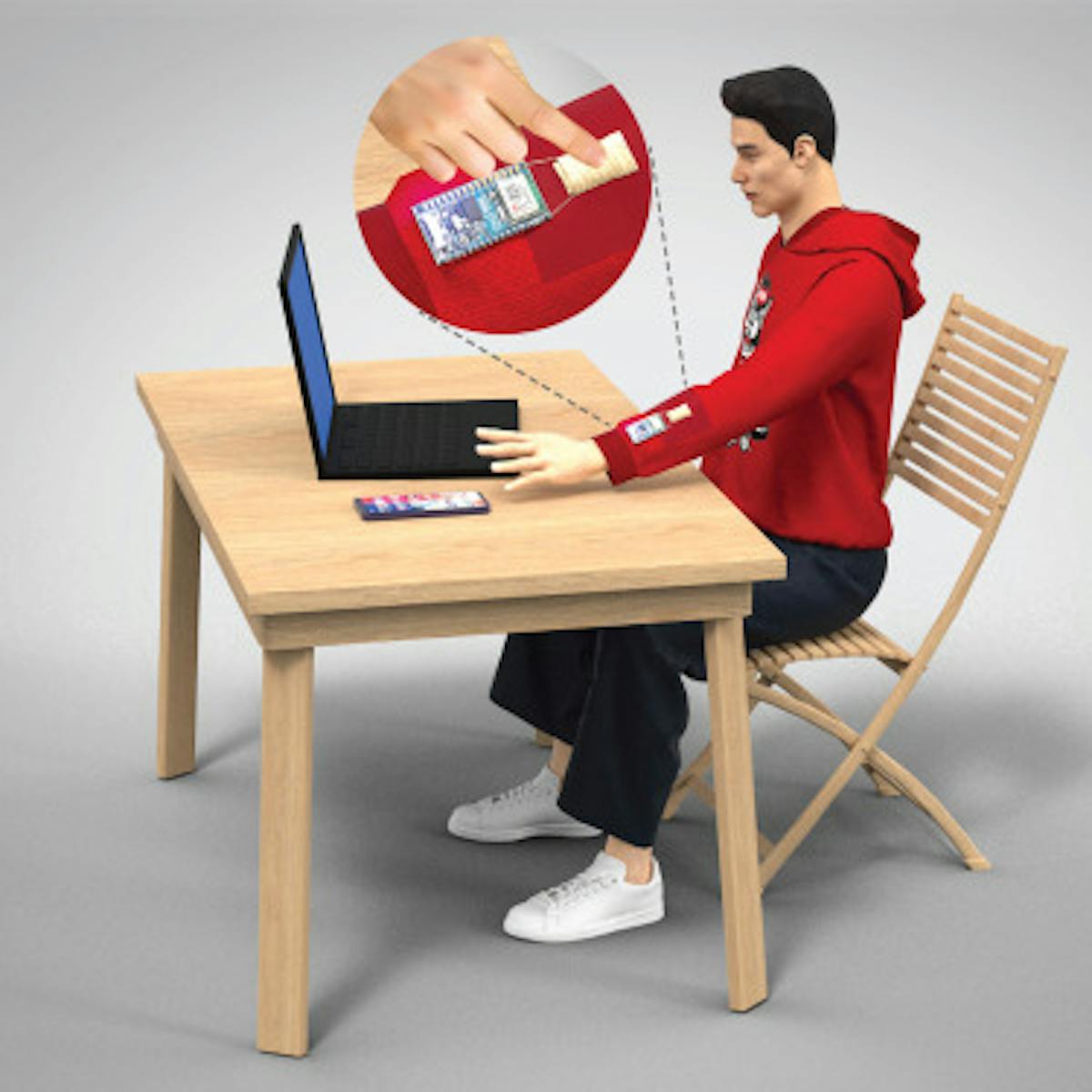Fashionably Functional Clothing
This fabric-based pressure sensor is self-powered and can control electronic devices with the help of an Arduino and machine learning.

The wearable electronics market has been heating up lately, with smartwatches, wristbands, and other devices acquiring new skills at a rapid pace. As these systems continue to gain new functions and become more useful to their users, the demand for them is expected to rise. But we cannot ignore form and solely focus on function — if these wearables are uncomfortable to wear, or are a pain to keep charged, people will not want to use them.
A number of research groups are working to address these issues by exploring novel technologies. One of the more popular areas presently being explored is the integration of sensors and other electronic components into fabric. Once these technologies have been refined, they will render wearable devices completely transparent to their users. By wearing the clothing that they would wear anyway, users will have the ability to control their devices, collect health-related metrics, and more.

That will not quite solve the wearable device problem entirely, however. These systems still need power for normal operation. Using traditional solutions, like batteries, introduces discomfort and inconvenience into the equation. Having a rigid battery pack inside your shirt is far from ideal and also means that recharging is necessary — oh, and be sure you never forget to remove the battery before washing your shirt!
Fortunately, practical textile-based wearable electronics may soon be a reality. A team at North Carolina State University has developed a method that allows them to incorporate fabric-based pressure sensors into clothing. Pressure sensors can be used for all sorts of applications, from acting as a button or keyboard to sensing the wearer’s movements. Their system also does away with batteries entirely — the power is supplied via an energy harvesting mechanism. The act of pressing on the sensor supplies it with all the power it needs.
The sensor is made up of two layers of embroidered triboelectric materials — one layer has a positive electrical charge, and the other a negative charge. A spacer is inserted between the layers. When the sensor is pressed down, the gap between the layers is closed, and friction is generated between the layers. This arrangement of components is called a triboelectric nanogenerator, and the friction between the triboelectric materials causes an electrical current to be produced.
This electrical current is used as a signal that the pressure sensor has been activated, and to what degree (i.e. a light or heavy pressure). A single button cannot perform many functions, but by using gestures, like single, double, or triple clicks, slides, and long presses, a lot more can be squeezed out of one sensor. So to detect gestures of this sort, the researchers turned to machine learning.
The sensor was hooked up to the GPIO pins of an Arduino Nano ESP32. The incoming signals were then interpreted by a machine learning model that was trained to recognize the finger gesture being made by the user. This setup worked exceedingly well — finger gestures were correctly recognized in 99 percent of cases. Using this method also allowed the team to ignore inputs that were not real, perhaps from normal interactions with the environment, or the fabric rubbing together as the wearer moved about.
To demonstrate how this technology could be incorporated into a real-world device, the team built a fabric-based system to control music playback. Finger gestures were assigned to actions like play, next song, and volume up.
As it presently stands, the sensor and its power source are integrated into clothing, but there is still an Arduino (and its power source) that is required for operation. This is a step in the right direction, but there is still more work to be done before we have a truly transparent, clothing-based wearable device.
R&D, creativity, and building the next big thing you never knew you wanted are my specialties.

